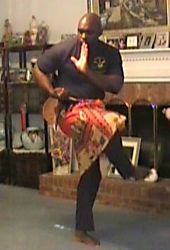Pentjak Silat
Pentjak Silat
Pentjak Silat or Silat ("fighting by using techniques of self-defense") is a Southeast Asian martial art with roots in the culture of the Malay world. This art is widely known in Indonesia, Malaysia, Brunei, Singapore, and the Philippines but can also be found in varying degrees among the Malay-affiliated communities in Thailand and Cambodia.. The art has also reached Europe, and is especially popular in the Netherlands, where it is as popular as karate is in the United States. It is estimated that there are hundreds of styles and thousands of schools. Many of the styles find their origin in the observation of wild animals fighting. "Harimau" (Tiger) and "Elang" (Eagle) are some examples.
Insight
Pentjak silat is a system that consists of sikap-sikap or kuda-kuda (positions) and gerak-geri (movements). When pesilat (silat practitioners) are moving (when fighting) these sikap and gerak-geri change continuously. As soon as one finds an opening in their opponent's defense, they will try to finish the opponent with a fast serangan (attack).
Pentjak silat has a wide variety of defense and attacking techniques. Practitioners may use hands, elbows, arms, legs, knees and feet in attacks. Common techniques include kicking, hitting, tripping, sweeps, locks, takedowns, throws, strangles, and joint breaking.
The pesilat, or silat practitioner, practices with djurus - a series of movements for the upper body used as a guide to learn the applications, or sambut, when done with a partner. The use of langkah (steps), or lower body movements teach the use of footwork. When combined, it is dasar pasang, or whole body flow. This is common to most Asian martial arts and called kata in Japanese.
